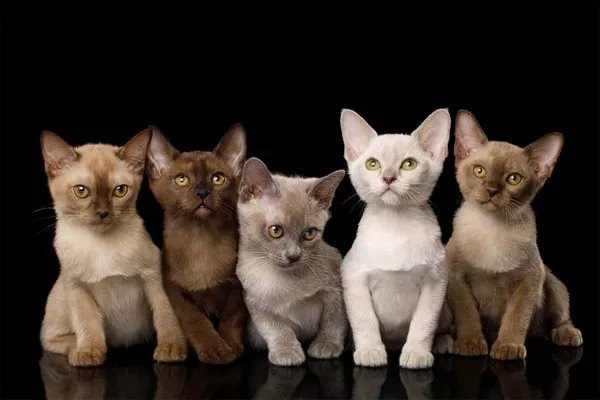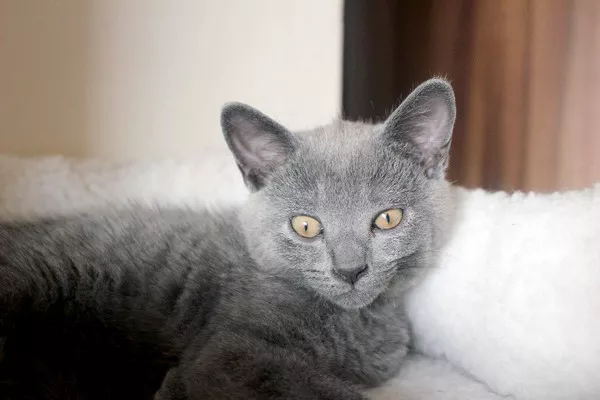Burmese cats are beloved for their playful and energetic nature, but sometimes their boundless energy can leave owners wondering when they will finally calm down. While Burmese cats are known for retaining their playful demeanor well into adulthood, there are strategies and training tips that can help manage their energy levels and behavior. In this article, we will explore the factors influencing a Burmese cat’s behavior and provide training tips to help you and your feline companion live harmoniously together.
The Nature of Burmese Cats
Burmese cats are known for their outgoing and lively personalities. Bred for their friendly disposition and playful nature, they enjoy interactive play sessions and thrive on companionship. These intelligent and curious cats love to explore their surroundings and engage in activities that challenge their minds and bodies.
While their energy and enthusiasm may be endearing, it’s essential to understand that Burmese cats typically retain their playful demeanor well into adulthood. This means that owners should expect their Burmese cat to remain active and energetic throughout their lives, with occasional bursts of kitten-like behavior, even as they age.
Factors Influencing Behavior
Several factors can influence a Burmese cat’s behavior and energy levels:
Age: Kittens are naturally more playful and energetic than adult cats, as they are in the early stages of development and exploration. As your Burmese cat matures, their activity levels may decrease slightly, but they will likely remain active and playful well into adulthood.
Health: A cat’s overall health can impact their behavior and energy levels. Ensure your Burmese cat receives regular veterinary check-ups and maintains a healthy diet and weight to support optimal physical and mental well-being.
Environment: Environmental enrichment plays a crucial role in a cat’s behavior and mental stimulation. Provide plenty of opportunities for play, exploration, and interaction, such as toys, scratching posts, and climbing structures, to keep your Burmese cat engaged and entertained.
Socialization: Burmese cats are highly social animals that thrive on companionship and interaction. Spend quality time with your cat, engaging in interactive play sessions and providing affection and attention to strengthen your bond and alleviate boredom.
Training Tips for Burmese Cats
While Burmese cats are naturally energetic and playful, training can help channel their energy into positive behaviors and reinforce good habits. Here are some training tips to help manage your Burmese cat’s behavior:
1. Positive Reinforcement: Use positive reinforcement techniques, such as treats, praise, and play, to encourage desired behaviors in your Burmese cat. Reward them immediately after they exhibit the behavior you want to reinforce, such as using a scratching post instead of furniture or coming when called.
2. Consistency: Be consistent in your training efforts and expectations for your Burmese cat. Use the same commands and signals consistently, and reinforce desired behaviors consistently to avoid confusion.
3. Clicker Training: Consider using clicker training as a method of positive reinforcement for your Burmese cat. Clicker training involves using a small handheld clicker device to mark desired behaviors, followed by a reward. This method can be effective for teaching tricks, obedience, and other desired behaviors.
4. Environmental Enrichment: Provide plenty of opportunities for mental and physical stimulation through environmental enrichment. Rotate toys regularly to keep your Burmese cat engaged, provide interactive toys that encourage hunting and play, and create vertical spaces for climbing and exploration.
5. Interactive Play: Engage in regular interactive play sessions with your Burmese cat to help burn off excess energy and provide mental stimulation. Use toys that mimic prey, such as feather wands or laser pointers, to encourage natural hunting behaviors.
6. Scratching Posts: Provide multiple scratching posts or pads throughout your home to satisfy your Burmese cat’s natural instinct to scratch and stretch. Encourage your cat to use scratching posts by placing them in strategic locations and rewarding them for using them.
Conclusion
While Burmese cats are known for their playful and energetic nature, training and environmental enrichment can help manage their behavior and energy levels effectively. By understanding the factors influencing your Burmese cat’s behavior and implementing positive reinforcement techniques and training tips, you can foster a harmonious relationship with your feline companion. With patience, consistency, and plenty of love and affection, you can help your Burmese cat thrive and enjoy a fulfilling life together.


























